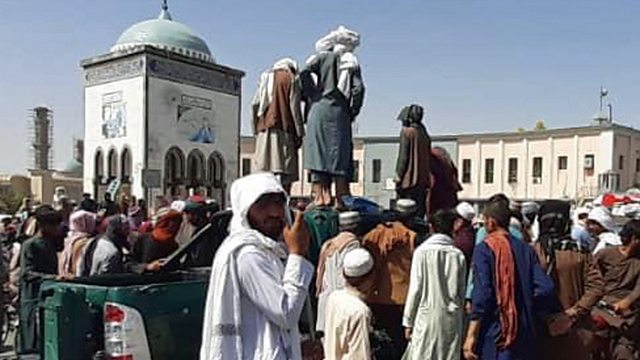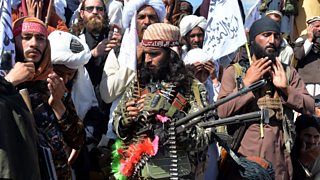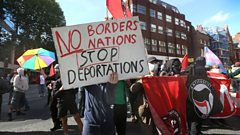How are the Taliban structured?
With rapidly increasing territorial gains, the fact the group is both centralised and decentralised is crucial to their ability to maintain control.
The Taliban has taken more territory in the past couple of months than it has at any time since being ousted from power in 2001 and now control about a third of Afghanistan's provincial capitals. With rapidly increasing territory, which include regional centres such as the country's second-largest city Kandahar, their internal structure is crucial to sustaining their advances.
Col. Christopher Kolenda, a former senior policy adviser in Afghanistan to US Army General Stanley McChrystal, and Michael Semple, Professor at the Mitchell Institute for Global Peace Security and Justice at Queen's University Belfast, explain the advantages of their organisational structure, and but say that "their command and control is really being stretched".
"They operate by consensus rather than dictatorial direction, so one of the things that makes their organisation so elastic is their decentralisation and their ability to absorb different personalities and localities." (Christopher Kolenda)
Photo: Taliban militants gather around the main square after taking control of Kandahar, Afghanistan Credit: EPA/STRINGER
Duration:
This clip is from
More clips from How do the Taliban keep going?
-
![]()
How the Taliban have become 'media savvy'
Duration: 02:02
-
![]()
How are the Taliban funded?
Duration: 02:39
More clips from The Real Story
-
![]()
COP27: What is a COP?
Duration: 03:03
-
![]()
UK economy 'fell behind' after Brexit
Duration: 02:00
-
![]()
Does the UK have a political identity crisis?
Duration: 00:40
-
![]()
Is Brexit still at the root of UK political divisions?
Duration: 01:38








